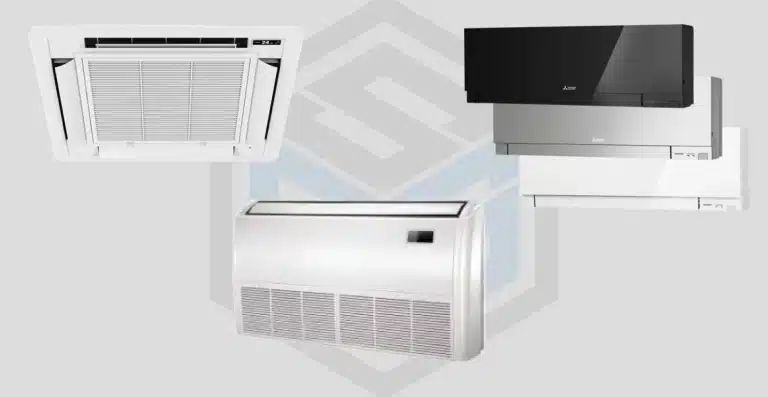If you’re building a new home, tackling a remodel, or making necessary upgrades, choosing the right insulation type is obviously a very big deal. The two most popular options are fiberglass and cellulose. But how do you know which one is the better choice for your project when it comes to cellulose vs fiberglass insulation?
Through this article, we shall break down the key differences between cellulose vs fiberglass insulation, looking at how easy they are to install, how diligently they keep your home at the right temperature, and whether they’re worth the investment.
Hopefully, by the end of this guide, you will have a clear picture of which attic insulation material is your perfect fit when it comes to fiberglass vs cellulose insulation. First, we shall take a quick look at the main differences between the two materials.
Key Points
- Easy Installation: Fiberglass batts can be manually installed without specialized equipment.
- Superior Thermal Resistance: Fiberglass typically offers higher R-values than cellulose, enhancing heat flow resistance.
- Less Dusty: Fiberglass insulation is cleaner to handle compared to the dustier cellulose.
- Noncombustible Material: Fiberglass is made from sand and recycled glass, making it naturally fire-resistant.
- Eco-Friendly Option: Fiberglass insulation often includes recycled materials, supporting environmental sustainability.
- Long-term Effectiveness: Fiberglass does not settle as much as cellulose, maintaining its insulative properties over time.
What is Fiberglass Insulation?
Fiberglass insulation is made from recycled glass and other renewable materials that are melted down before being gently spun into finer fibers. This type of insulation is notably versatile, available in pre-cut batts and rolls for easy installation between studs and joists, as well as in a blown-in format. Often referred to as ‘loose fill’ or ‘blowing wool,’ blown-in fiberglass is a flexible option for filling odd-shaped spaces and attics, basically ensuring that no nooks or crannies are left uncovered.
When you are comparing fiberglass insulation vs cellulose, just know that both materials serve well, but fiberglass is commonly more valued for its ease of installation and highly effective thermal resistance. Either way, whether you are insulating an attic or just sealing off a draft, choosing between cellulose or fiberglass insulation involves considerations like R-value, moisture resistance, and environmental impact. We will cover those shortly.
What is Cellulose Insulation?
Cellulose insulation is commonly derived from recycled newspaper and other paper sources and is a good ‘green choice’ for insulating homes. This type of insulation is mostly used in a blown-in form and is generally viewed as ideal for filling attic spaces or for the “drill and fill” method in existing sidewalls.
In addition, cellulose can also be applied wet, which helps it conform to odd shapes and provides a good seal against air leaks. If you are deciding between cellulose vs. fiberglass insulation, you must consider that both materials are effective – but cellulose is often chosen for its eco-friendly properties. It also has good soundproofing abilities, which is useful for loud urban areas.
When considering attic or crawl space insulation, deciding between blown fiberglass vs. cellulose will usually depend on factors like thermal performance and environmental impact as the main considerations. However, it is important not to overlook the R-factors of cellulose insulation vs fiberglass when choosing the best fit for your home, and we shall take a quick look at that next.
Thermal Performance / R-Value
R-value basically measures the insulation’s resistance to heat flow; the higher the R-value, the better its insulating effectiveness. In most cases, fiberglass often outperforms cellulose. Thanks to the engineering of finer fibers, fiberglass insulation can pack a more insulative punch into the same wall cavity.

For example, blown-in fiberglass insulation can reach an R-15 value in a standard 2×4 side wall, whereas cellulose typically maxes out at R-13 under similar conditions. This difference of just two points (on average) probably doesn’t seem like a huge amount, but it represents a notable difference in thermal performance. Either way, if you are in the market for fiberglass or cellulose insulation, the R-factor will be an important factor.
Which Insulation is Easier to Install?
When it comes to cellulose insulation vs fiberglass, the latter usually comes out ahead. With its tightly spun fibers, fiberglass insulation tends to be less dusty than cellulose, which is mostly made from shredded newspaper. In general terms, this makes fiberglass not only cleaner to handle but also far simpler to install.
Unlike cellulose, which typically requires a blowing machine for installation (and that often requires two people to operate at a minimum), fiberglass batts and rolls can be installed manually without special equipment. It is this straightforward installation process that makes fiberglass a more popular, practical choice not just for professionals but also for DIY insulation installation.
If you are considering fiberglass vs. cellulose insulation for areas like attics, fiberglass is almost certainly the far easier option.
What About Fire Safety?
Fire safety will be a deciding factor for most people in terms of cellulose vs fiberglass insulation: without question, fiberglass is the safer option in this regard. It all boils down to the material in question: fiberglass insulation is made from recycled glass and sand and is inherently noncombustible. Both blown-in fiberglass and unfaced fiberglass batts meet the ASTM E136 standard for noncombustibility.
On the other hand, cellulose insulation is made almost exclusively with paper. As you might expect, this is naturally flammable and must be treated with fire-retardant chemicals to reduce risk. These treatments often include substances like boric acid and sulfates, which can pose health and safety concerns as they may degrade over time.
Which Is the Most Affordable Option?
Both fiberglass and cellulose are affordable insulation materials without any major price difference. Whether you are choosing fiberglass or cellulose insulation, you can expect to pay (on average) somewhere in the region of $0.70 to $1.00 per square foot, assuming six inches of insulation. Installation services might charge a little less for fiberglass insulation as it is easier to install in most cases. Ultimately, your choice may also depend on the specific requirements and structure of your home, which can affect overall costs.
Wrap-Up: Cellulose vs Fiberglass Insulation
In terms of which is the best option, there is no correct answer, as individual circumstances are different. Having said that, if you are faced with the option of choosing cellulose or fiberglass insulation, fiberglass will get our vote in most cases. Indeed, fiberglass insulation is fitted in approximately 80 percent of American homes.
The popularity of fiberglass stems from its ease of installation, adaptability, and strong performance, while its flexibility is especially effective for blown-in applications, as it seamlessly fills gaps and evenly covers areas.

Contact Envirosmart Solutions for Insulation Services Today!
Interested in boosting your home’s comfort? Envirosmart Solutions specializes in insulation removal and installation to prepare your home for any season. Take advantage of our special offers and benefit from our professional insulation services!







